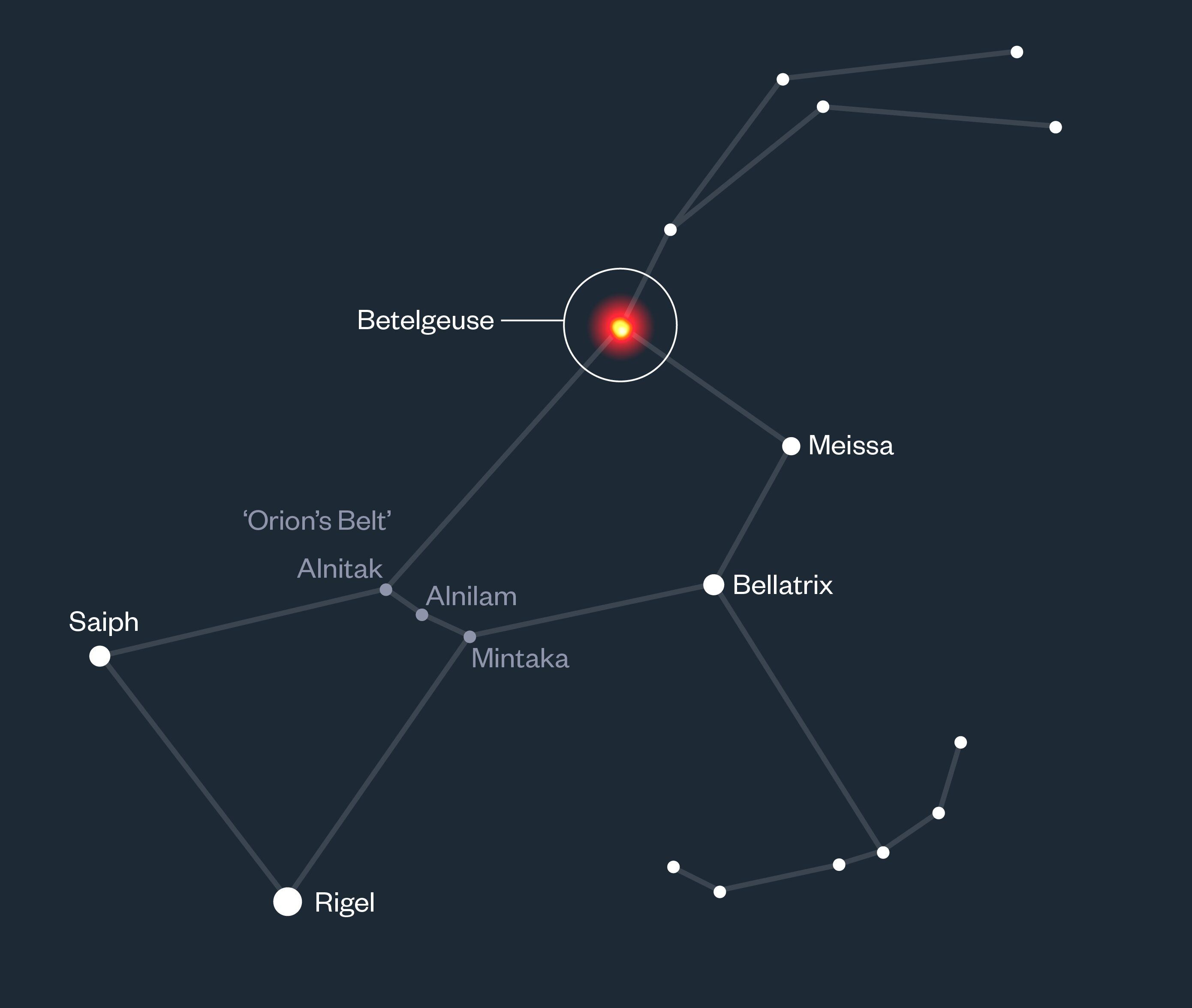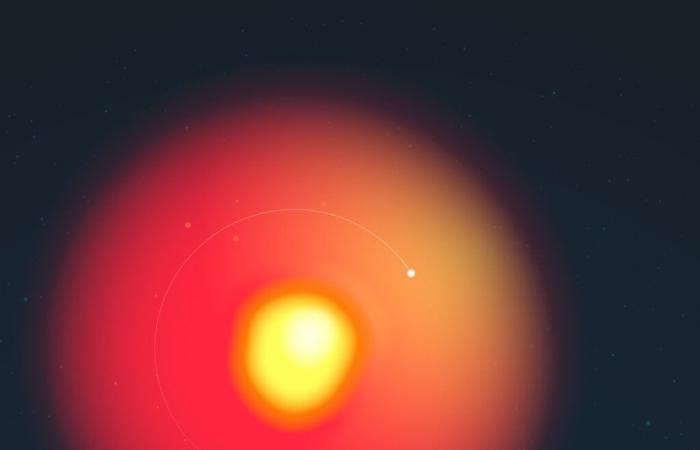Betelgeuse, one of the brightest and easily recognized stars in the night sky, might not be what you think.
While most scientists suggest it is on the verge of exploding as a supernova, a new study reveals an intriguing hypothesis: the presence of a companion star could be responsible for its variations in brightness.
Credit: Lucy Reading-Ikkanda/Simons Foundation
This star, nicknamed “Betelbuddy” by researchers, would orbit Betelgeuse by sweeping away the stellar dust that surrounds it. This interaction would make the star appear brighter at times, according to Jared Goldberg, lead author of the study published on the preprint site arXiv. Current scientific consensus indicates that Betelgeuse’s variations in brightness are due to its internal pulsations, a common characteristic of stars at the end of their lives. Indeed, Betelgeuse, a red giant, glows and dims cyclically. However, part of this variability could be due to an external phenomenon.
Goldberg and his team, after analyzing several potential causes, concluded that the only possible explanation would be the presence of Betelbuddy, a hidden star that influences Betelgeuse’s brightness by periodically releasing surrounding dust.
The idea of a “long secondary period” is at the heart of this study. This particular variation in brightness, slower than the normal pulsations of the star, could be caused by the presence of an object in orbit. Betelbuddy could thus play a major role in influencing the amount of light visible from the Earth of Betelgeuse.
Credit: Lucy Reading-Ikkanda/Simons Foundation
Although Betelbuddy is hypothetical, researchers believe it could be a star similar in size to our Sun. Another, more daring hypothesis suggests that this companion would be a neutron star, the compact core of a star that has already exploded in a supernova. However, to validate this idea, X-ray evidence would be needed, and current observations show no such thing.
To confirm this presence, the team plans to observe Betelgeuse in hopes of detecting Betelbuddy, particularly around December 6, a time when it could become visible. This search for visual evidence is crucial, because so far the presence of the companion star has only been based on simulations and indirect clues.
This project is an example of collaborative science: it combines experts in computer modeling, observation of massive stars and analysis of data spatial. According to astrophysicist Meridith Joyce, without this combination talent, such a search would not have been possible.
The study of Betelgeuse reminds us that even the most studied stars, like it, can still surprise us. For László Molnár, co-author of the study, it is the very idea that a star the size of Betelgeuse perhaps hides a discreet companion that makes this research so exciting.

Credit: Lucy Reading-Ikkanda/Simons Foundation








